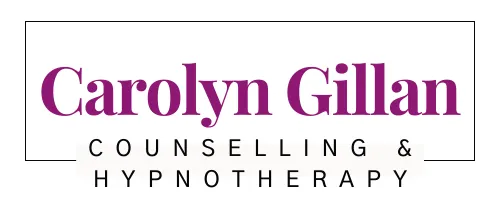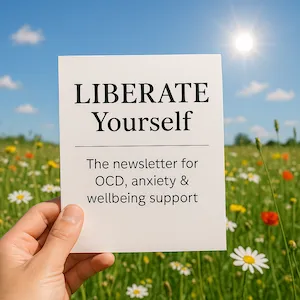
Six strategies to calm anxiety and panic attacks
As a counsellor and hypnotherapist, I’m often asked for strategies that can help calm anxiety or panic attacks. The six strategies explained here are ones that have been tried and tested by my clients. Not everything will work for everyone. You may find some strategies more helpful than others, so it’s important to experiment and find what’s right for you. If your anxiety or panic attacks still persist and things aren’t improving, you may find counselling or hypnotherapy helpful.
1. Breathing techniques
Breathing techniques can help have a calming effect by slowing your breathing down and reducing your anxiety. Sit upright on a comfortable chair with your feet flat on the floor. Take a deep breath in through your nose for 4 seconds (hold your hand flat on your stomach, you should see it rise as you breathe in). Hold your breath for 2 seconds and exhale through your nose for 6 seconds. (Breathe through your mouth if it is difficult to breathe through your nose). If you struggle at first to slow your breathing to the above rate, you could try 3 in, 1 hold and 4 out to begin with. Practice this technique 2 or 3 times a day and it will help you to develop a more relaxed breathing style.
2. Mental distraction
Mental distraction can help to take the edge off the symptoms of a panic attack. A simple way of doing this would be to work backwards in your head from 100 deducting 3 each time, e.g. 100, 97, 94… and so on. Alternatively having a small puzzle, one that will fit into a pocket, and requires concentration and manipulation (like those ball and maze games where you have to get the ball into the centre without dropping it down a hole) can help.
3. Low intensity exercise
Low intensity exercise, such as walking or swimming, have been shown to be of help in reducing anxiety symptoms. Remember, you should always consult your doctor first before commencing any new exercise programme.
4. Face the things you want to avoid
Most people find themselves avoiding the situations that cause them anxiety or panic. This makes sense. Why would you put yourself in an anxiety-provoking situation if you can avoid it? Unfortunately, this strategy which at first seems helpful becomes counterproductive and actually makes matters worse in the longer term. Facing the things you want to avoid is the antidote. Begin by gently reintroducing yourself to the least anxiety-provoking situations first and build up from there. The more time you spend in these situations, the more you’ll notice that the anxiety and panic fades and your confidence increases.
5. Progressive muscle relaxation
Progressive Muscle Relaxation can help reduce muscle tension that often accompanies anxiety. This technique requires that you tense each muscle group in sequence, holding for 5 seconds, then relaxing for 10 seconds before moving onto the next muscle group. When you tense each muscle group you should feel it but not so much so that it causes pain. This technique works best if you practice it regularly to help you become more aware of where you hold tension in your body and how to release it. The relaxation sequence is:
Right hand and forearm – Make a fist.
Right upper arm – Bend your arm to make a muscle.
Left hand and forearm – Make a fist.
Left upper arm – Bend your arm to make a muscle.
Forehead – Raise your eyebrows as high as you can.
Eyes and cheeks – Squeeze your eyes shut.
Mouth and jaw – Open your mouth as wide as you can.
Neck – Face forward and raise your head to look at the ceiling. Note: Be very careful not to over tense your neck!
Shoulders – Bring your shoulders up to your ears.
Shoulder blades and back – Bring your shoulder blades together as far as you can and push your chest out.
Chest and stomach – Breathe in deeply filling your chest and lungs with air.
Hips and bottom – Tighten your bottom muscles together.
Right upper leg – Tighten your thigh.
Right lower leg – Pull your toes towards you. Beware over tightening your calf muscle and causing cramp.
Right foot – Clench your toes downwards.
Left upper leg – Tighten your thigh.
Left lower leg – Pull your toes towards you. Beware overtightening your calf muscle and causing cramp.
Left foot – Clench your toes downwards.
6. Visualisation techniques
Visualisation techniques can help to replace frightening fantasies or daydreams that occur during intense anxiety or a panic attack. One visualisation that might help is to think of a time and place when you felt calm and content. Perhaps you were on holiday, visiting a favourite place or just chilling out at home. Next relax, breathe slowly and deeply and bring this image to mind as if you are there now. As you recall this image, what do you notice about yourself and your surroundings? What can you see, hear, taste and smell? What can you physically feel on your skin? Are you warm or cold? Can you feel that sense of contentment and calm? Where do you feel this in your body? Hold this image and feeling for a minute or two. It will help to improve your mood. This technique works best if you practice it regularly so that you can call on it easily when you need help. If you are struggling to remember a pleasant memory you could always make one up, a fantasy will help just as well!
You can find audio recordings of progressive muscle relaxation, visualisations and breathing techniques on the NHS website here.


